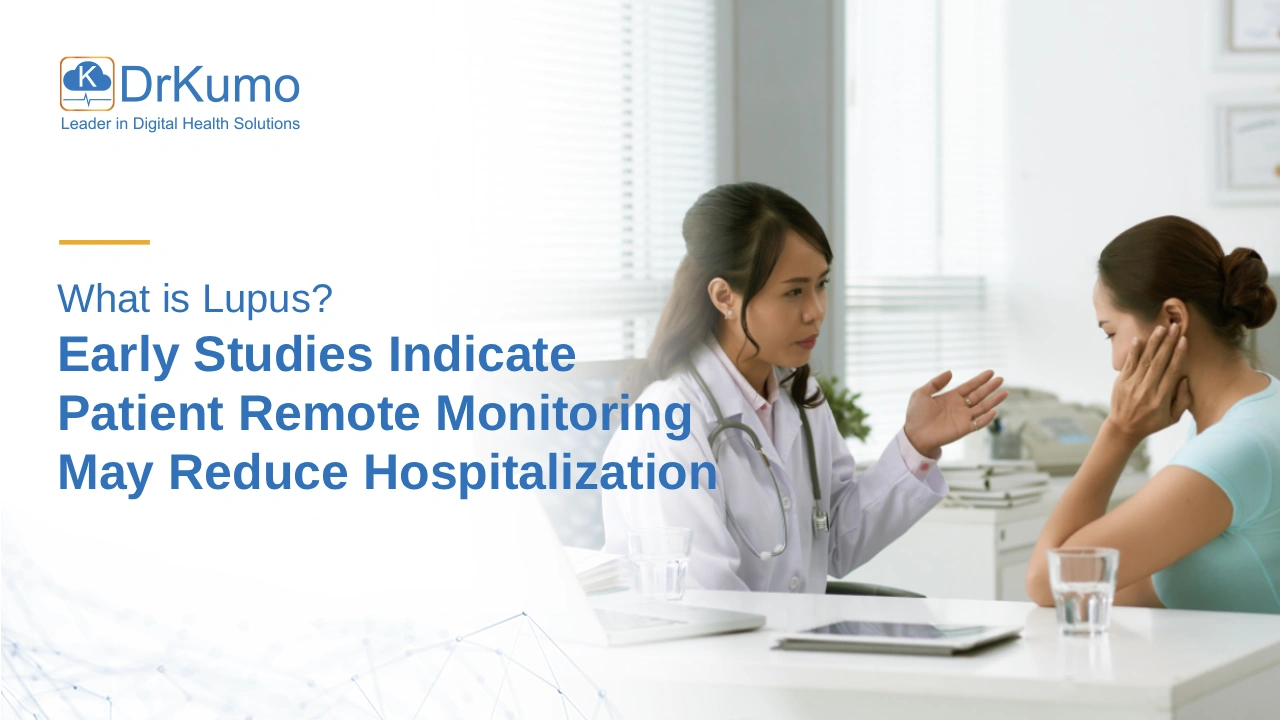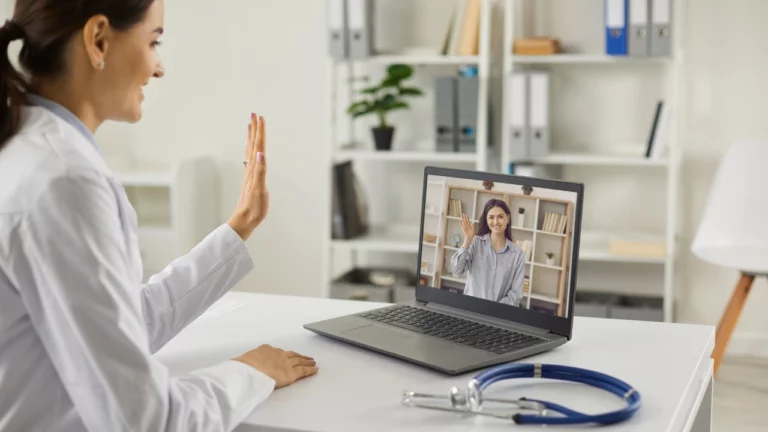EaLupus, particularly systemic lupus erythematosus (SLE), is a chronic autoimmune disease where the immune system mistakenly attacks healthy tissues, leading to inflammation and damage across various body systems. Recent advancements in telemedicine and remote patient monitoring have shown promise in managing lupus more effectively, with early studies suggesting a potential reduction in hospitalizations.
This potential breakthrough represents a critical shift in chronic disease management, particularly for complex and unpredictable conditions like lupus. The combination of technology and clinical care may offer a more proactive, patient-centered approach.
Understanding Lupus: A Complex Autoimmune Disorder
Lupus is characterized by its ability to affect multiple organs, including the skin, joints, kidneys, heart, lungs, and brain. Symptoms vary widely among individuals, but commonly include fatigue, joint pain, skin rashes, and fever. While lupus can affect all genders and ethnicities, it predominantly affects women, with 9 out of 10 adults with lupus being female.
The disease typically manifests between the ages of 15 and 45. However, there are significant disparities in prevalence among different racial and ethnic groups. Lupus is two to three times more prevalent among African American, Hispanic/Latina, Asian American, Native American, Alaska Native, and Native Hawaiian and other Pacific Islander women compared to White women. For instance, recent research indicates that lupus affects 1 in 537 young African American women. Furthermore, studies show that Black and American Indian/Alaska Native women are 2 to 3 times more likely than White women to develop lupus and often experience more severe cases with higher rates of organ involvement, such as kidney disease.
The exact cause remains unknown, though genetic, environmental, and hormonal factors are believed to contribute.
Diagnosing lupus can be challenging due to its diverse manifestations and similarity to other conditions. Healthcare providers rely on a combination of clinical evaluation, laboratory tests, and patient history to make an accurate diagnosis. Early detection and treatment are crucial to prevent organ damage and improve quality of life. Management strategies often involve medications like nonsteroidal anti-inflammatory drugs (NSAIDs), corticosteroids, immunosuppressants, and antimalarial drugs such as hydroxychloroquine.
The Role of Remote Monitoring in Lupus Management
The integration of telemedicine and remote patient monitoring has emerged as a valuable tool in chronic care management, including lupus. These technologies enable continuous monitoring of patients’ health status, facilitating timely interventions and complementing traditional in-person visits rather than fully replacing them. Remote monitoring tools can monitor symptoms, medication adherence, and vital signs, providing healthcare providers with real-time data to make informed decisions. This approach not only enhances patient engagement but also allows for personalized care plans tailored to individual needs.
Moreover, remote monitoring can help identify early signs of disease flares, enabling prompt adjustments to treatment regimens. By maintaining closer communication between patients and healthcare teams, potential complications can be addressed swiftly, potentially reducing the severity and duration of flares. This proactive approach aligns with the goal of minimizing disease activity and preventing long-term organ damage. Additionally, remote monitoring may help alleviate the burden on healthcare systems by potentially decreasing unnecessary hospital visits and optimizing resource allocation.
Early Studies Indicate Remote Patient Monitoring May Significantly Reduce Hospitalizations
The integration of Remote Patient Monitoring (RPM) into chronic disease management has shown substantial promise in reducing hospitalizations and improving patient outcomes. By enabling continuous monitoring of health data from home, RPM facilitates timely interventions and can significantly alleviate the burden on healthcare systems.
While precise, universally applicable percentages for hospitalization reduction vary based on patient population, specific conditions, and RPM program design, numerous studies and reports from reputable organizations highlight this potential:
- Significant Reductions Across Chronic Conditions (AHRQ, 2016): A “review of reviews” study by the Agency for Healthcare Research and Quality (AHRQ) in 2016 concluded that telehealth, including remote monitoring, consistently provided clinical benefits for patients with chronic conditions such as cardiovascular and respiratory disease, including improvements in outcomes like reductions in hospital admissions.
- Evidence for Cardiovascular Disease Management (NIH, 2025): The National Institutes of Health (NIH) notes that RPM services have been shown to support care quality and improve access to care, and are now endorsed by international clinical guidelines as a core component of cardiovascular disease management, a major contributor to hospitalizations.
- Specific Program Outcomes (Michigan Medicine, 2025): While the original source was a medical news outlet reporting on a study, the underlying research, which is valuable, can be attributed more broadly. A large academic medical center’s RPM program for high-risk patients with conditions like congestive heart failure and uncontrolled hypertension demonstrated significant reductions in hospital admissions.
These findings collectively underscore the significant potential of RPM to transform chronic disease management, enabling earlier detection of deterioration, fostering proactive interventions, improving patient stability, and ultimately reducing the need for costly hospitalizations and readmissions across a range of chronic conditions. While direct, high-percentage claims specifically for lupus hospitalization reduction via RPM from broad government or WHO reports are still emerging, the general benefits observed in other chronic conditions provide a strong indication of its promise.
Evidence Supporting Reduced Hospitalizations
Emerging studies suggest that remote patient monitoring may lead to a significant decrease in hospitalizations among lupus patients. For instance, a study highlighted that regularly checking blood levels of hydroxychloroquine (HCQ) may reduce the need for emergency room visits and hospitalizations for people living with lupus. HCQ is a widely used, safe medication for treating lupus, but not taking it as prescribed can triple the risk of lupus-related hospital visits. This underscores the importance of medication adherence and monitoring in disease management.
Another study focused on telemedicine for follow-up of systemic lupus erythematosus during the COVID-19 pandemic found that telemedicine predominant follow-up resulted in similar one-year disease control compared to standard care. However, it needed to be complemented by in-person visits, especially in patients with unstable disease. These findings indicate that while remote monitoring is beneficial, a hybrid approach combining telemedicine and traditional care may be most effective. Further research is needed to assess how the widespread use of telemedicine may impact disease activity and hospitalization rates.
Challenges and Considerations
Despite the promising potential of remote monitoring, several challenges must be addressed to ensure its effectiveness. Access to technology and reliable internet connectivity can be barriers for some patients, particularly in underserved or rural areas. DrKumo Digital Health Solutions aims to mitigate some of these barriers through intuitive interfaces and robust data protection, although reliable internet connectivity remains essential.
Additionally, concerns about data privacy and security must be carefully managed to protect patient information. DrKumo prioritizes data security using robust encryption and adherence to strict compliance standards designed to protect patient confidentiality. Healthcare providers also need adequate training to interpret remote monitoring data accurately and integrate it into clinical decision-making.
Moreover, not all patients may be suitable candidates for remote monitoring, especially those with severe disease manifestations requiring close in-person supervision. Therefore, patient selection and individualized care plans are essential to maximize the benefits of remote monitoring.
DrKumo’s platform supports personalized care plans by allowing for extensive customization of monitoring parameters based on individual patient needs. This flexibility enables healthcare providers to tailor the platform’s focus to specific conditions, vital signs, and frequency of data collection, optimizing the remote monitoring experience for each patient. Healthcare systems must also consider reimbursement models and regulatory frameworks to support the integration of telemedicine into routine practice. Collaboration among stakeholders, including patients, providers, policymakers, and technology developers, is crucial to overcome these challenges.
Technology Innovations in Lupus Monitoring
Advancements in health technology are rapidly transforming how lupus is managed. Today’s remote monitoring tools go beyond basic symptom monitoring; they include AI-enabled analytics, wearable biosensors, and app-based patient education programs. For example, digital platforms can analyze trends in blood pressure, heart rate, or medication usage to help identify patterns that may precede potential flare-ups. Some advanced systems are being developed to explore the integration of data from electronic health records to inform treatment recommendations.
Mobile applications specifically designed for lupus management are an emerging area of development, offering features such as medication reminders, daily symptom logs, and direct communication channels with healthcare teams. Additionally, the integration of natural language processing (NLP) in patient portals is an experimental and developing technology that helps capture subjective symptoms like pain or fatigue more accurately. These innovations, as they mature, hold the promise to not only provide richer data for clinicians and streamline care coordination across specialists but also to transform lupus care from reactive to predictive.
Policy and Research Implications
To fully harness the benefits of remote monitoring for lupus, coordinated efforts in policy and research are required. Health policymakers must create frameworks that support telehealth reimbursement, ensure data security, and promote equitable access to technology. Investment in broadband infrastructure and patient digital literacy programs can bridge the digital divide and improve participation across socioeconomic groups. Additionally, long-term studies are needed to evaluate the cost-effectiveness and clinical impact of remote monitoring tools for autoimmune diseases like lupus.
Academic and industry partnerships can drive innovation while ensuring regulatory compliance and ethical standards. Research institutions should prioritize clinical trials that assess remote monitoring not just for lupus activity but also for outcomes like quality of life, functional status, and healthcare utilization. Global health organizations can play a role in establishing interoperability standards and best practices for digital lupus care. Ultimately, evidence-based policymaking will be key to sustaining progress in this transformative area of healthcare.
DrKumo Digital Health Solutions: Enhancing Lupus Management Through Remote Monitoring
DrKumo Digital Health Solutions offers a comprehensive platform that aligns directly with the positive findings on remote patient monitoring for lupus. DrKumo’s RPM technology enables individuals with lupus to regularly monitor key health indicators, such as fatigue levels, pain scores, and other relevant symptoms, from the comfort of their homes.
This is primarily achieved through patient self-reporting via the DrKumo mobile application and/or integrated patient portal, often incorporating structured questionnaires and daily symptom logs. This allows for the capture of subjective data, which complements the objective physiological data collected from connected medical devices.
This continuous data collection provides a more holistic view of the patient’s condition over time, potentially identifying subtle changes that might otherwise go unnoticed during less frequent in-person appointments.
By facilitating the consistent monitoring of lupus activity, DrKumo’s solutions can empower both patients and their healthcare providers to proactively manage the disease. The early detection of worsening symptoms through remote data can lead to timely interventions, potentially reducing the need for hospitalizations, as indicated by the early studies. This approach supports a more patient-centered model of care, promoting better symptom control and improved quality of life for individuals living with lupus.
Takeaways
Lupus remains a complex and challenging disease to manage, but advancements in remote patient monitoring offer a promising avenue to enhance care and reduce hospitalizations. Early studies indicate that integrating telemedicine into lupus management can lead to significant improvements in patient outcomes, including a potential reduction in hospital admissions.
While further research is necessary to establish standardized protocols and address existing challenges, the incorporation of remote monitoring represents a significant step forward in personalized, proactive lupus care. By embracing these innovations, healthcare providers can better support patients in managing their condition and improving their quality of life.
Living with lupus? Support your care journey from anywhere with personalized tools from DrKumo Digital Health Solutions – stay connected and empowered.
Disclaimer: This article provides general information about lupus and potential benefits of remote monitoring. Always consult with a qualified healthcare professional for diagnosis and treatment of lupus.








